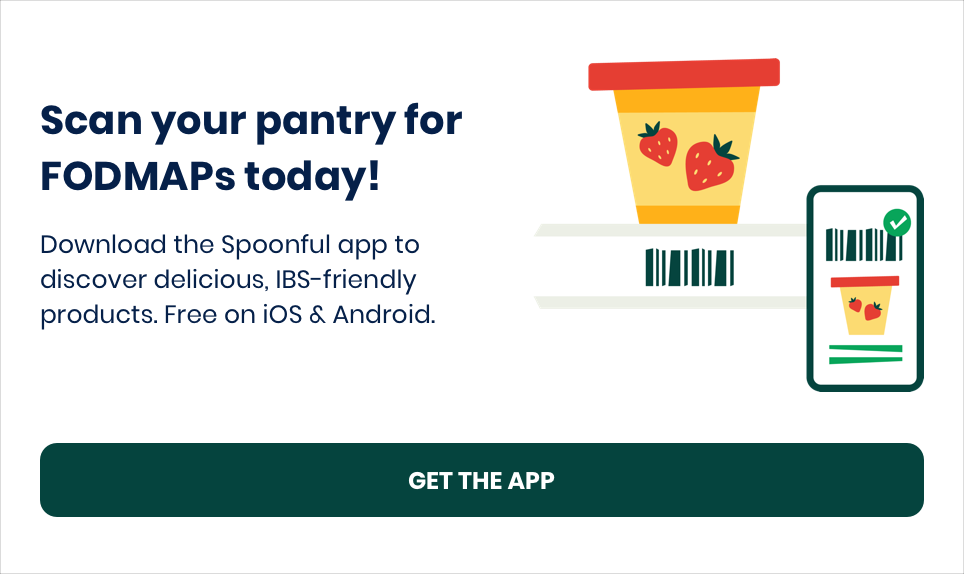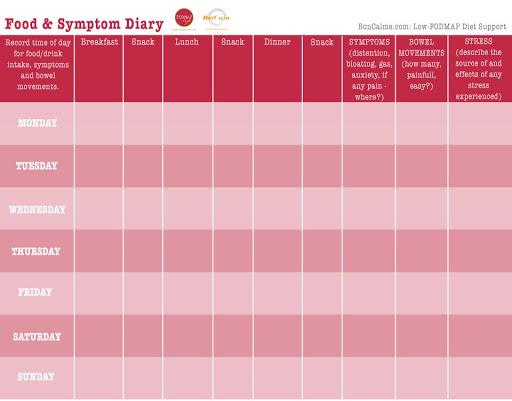Have you completed the Elimination Phase and seen significant improvements in your IBS symptoms? If so, it’s time to move onto the next phase: FODMAP Reintroduction. In this phase, you’ll be adding each of the FODMAP groups back into your diet to pinpoint your triggers and create a personalized eating plan.
You may be thinking, “Hey wait! I’m finally feeling better. Why would I want to add back foods that may potentially induce my IBS symptoms?”. Trust me, you are not alone in wanting to stay in the Elimination Phase, but please keep reading.
This article will help guide you through the Reintroduction Phase in a systematic and cautious manner, so you can uncover your specific triggers and eat more of what you love.

Why you shouldn’t skip reintroduction
More options!
The Low FODMAP Diet can be challenging when dining out at restaurants, sharing meals with friends and families, and trying new exciting recipes. Long-term diet restrictions can be self-isolating and negatively impact one’s quality of life. Restrictive diets also increase one’s risk of nutrient deficiencies, especially if not implemented under a dietitian’s supervision.
Learning to understand your FODMAP triggers can actually help reduce anxiety and likely help you be less restrictive with food choices over time. It is quite possible that you may be cutting out FODMAP groups that are not your triggers.
Identifying your triggers
The Reintroduction Phase is where all the learning occurs! The goal is to help you understand and identify which foods (and therefore FODMAPs) are triggering your symptoms. Once your triggers have been identified, you can better understand what portion size and frequency you can tolerate a certain FODMAP group. You may also find that you need to omit a certain food based on the severity of the reaction.
Maintaining healthy gut bacteria
Some evidence suggests the Low FODMAP Diet reduces bifida bacteria levels, which may have negative effects on your gut microbiome if you follow the diet for too long.
FODMAP Reintroduction Phase FAQ
Before I share some tips, know this: there is no evidence based approach or perfect way to complete FODMAP reintroduction. My suggestions are based on clinical experience, Monash FODMAP training, and keeping abreast of current FODMAP nutrition education recommendations. Your RD or healthcare provider may approach the Reintroduction Phase in a slightly different manner – and that’s okay!
The Reintroduction Phase lasts approximately 6-8 weeks depending on your personal pace and level of caution. Feel free to take pause at any time and restart when you are ready.
When should I start FODMAP reintroduction?
It is best to undertake the FODMAP challenges when stress levels are well managed and you are in a relaxed setting. I do not recommend taking on the challenge phase when you are on vacation, going through a stressful event, or while sick as these situations can independently affect your IBS symptoms.
The order of FODMAP challenges is personalized, which means you can start with any group you want. I often encourage my clients to start with the FODMAP group they miss most or the one they suspect is not a problem if they are worried about a flare up. It’s nice to start with a confidence booster.
Should I keep a food / symptom journal?
Yes! While I rarely encourage my clients to journal during the Elimination Phase, keeping good records during the Reintroduction Phase is essential, especially since IBS triggers often occur 4 to 48 hours after consumption. It may take a little detective work with you and your dietitian to interpret the results.
Here is a great Food / Symptom Journal template created by Colleen Francioli and the BonCalme team.

How should I choose foods during FODMAP reintroduction?
Choose a challenge food that represents only one FODMAP category. As you can see in the Monash App, many foods contain two or more FODMAP groups. For example, apples contain both fructose and sorbitol making them a poor challenge food.
It’s also important to start with a small, cautious portion in case you have a severe reaction. Starting small helps you recover from a flare up much sooner versus eating a larger serving or multiple servings of that FODMAP group.
Learn more about FODMAP portions
Last, make sure to reintroduce a food that you enjoy and can imagine adding back to your diet. If you never eat Brussels sprouts, ignorance is bliss!
How often should I test a challenge food?
I recommend testing each challenge food at least three times in a given week while continuing to eat only low FODMAP foods in appropriate portions. Why? The goal is to obtain a clear understanding of your FODMAP triggers. We want to avoid muddying the results of your test food with other high FODMAP foods as this can lead to unexpected symptoms down the line.
What should I do if I have a flare up?
For flare ups, try peppermint tea or a peppermint enteric coated capsule. You can also place a heating pad on your stomach, and/or engage in light exercises to help recover. Hopefully, you will be back on your feet and ready for the next challenge in a few days. If the challenge food is well tolerated, you can increase the portion size as tolerated over the next several days. Again, be sure there are 3 wash out days or good belly days between your challenges.
Should I work with a dietitian?
I highly recommended working with a FODMAP trained dietitian when embarking on the Elimination and Reintroduction Phases. Quite often, my clients need a more personalized approach based on other health concerns, previous experience with certain foods, and personal taste preferences. If you need to find a dietitian in your area, check out this list of experts.
Can I add a probiotic or supplement during reintroduction?
Similar to the Elimination Phase, I do not recommend adding any new supplements, probiotics, fiber supplements, digestive enzymes, etc. unless advised by your healthcare professional. Again, this is where individual dietitian support may be helpful. As a FODMAP trained dietitian, I may need to suggest other dietary modifications or recommend a fiber supplement based on current GI symptoms before taking on this phase.
For example, it is not uncommon for patients with IBS-C to see improvements with gas and bloating, but not constipation. In this case, it would be helpful to address the constipation before starting the Reintroduction Phase. Why should you not add supplements on your own? These supplements may potentially improve or worsen symptoms making it more challenging to identify your personal FODMAP triggers.
How to move through the FODMAP Reintroduction Phase
Choose your test food
Select a moderate or amber colored FODMAP food for a cautious challenge or a very small portion of a red colored FODMAP with only one FODMAP group as a starting place. Make sure to consume your entire challenge food all in one sitting – do not spread it out over several hours of meals.
Map out your test schedule
You can consume your test foods in 3 consecutive days, or you can aim for every other day if you prefer. Personally, I like to encourage consecutive days as this represents typical eating habits. As an example, I may eat ½ of an avocado today and the other half tomorrow.
Monitor symptoms
Be sure to record symptoms and details about your challenge food including portions in your journal.
Step 4: Take a break between challenges
Take a 3-day wash out period between the different FODMAP group challenges. We want your FODMAP bucket to be very low and no residual IBS symptoms when taking on a new challenge.
FODMAP Reintroduction Phase example:
Day 1
- Start with a small portion of your test food. Monitor symptoms for 24 hours.
- If you continue to be free of IBS symptoms carry on with a bigger portion day 2.
- If you experience any IBS symptoms, STOP and go back to the Elimination Phase for 3 days minimum or until symptoms subside. After you feel better you can try again with a smaller portion size or try another test food to confirm your intolerance.
Day 2
- Test a slightly larger serving size of the same test food.
- If you continue to tolerate this test food with no IBS symptoms after 24 hours, move on to day 3. Again, stop and wait if any symptoms occur.
Day 3
- Test a larger portion of a high FODMAP food. Try to push the serving a bit to ensure you can handle this FODMAP group.
Example Fructose Challenge
- Day 1: ⅓ of a mango
- Day 2: ½ of a mango
- Day 3: 1 whole mango
Example Lactose Challenge
- Day 1: ¼ cup milk
- Day 2: ½ cup milk
- Day 3: 1 cup milk
Tips for interpreting challenge results
- When completing the FODMAP reintroduction phase, try to rate your response as mild, moderate, and severe.
- If you experience only a mild reaction to a normal size portion, you can likely have small portions of this FODMAP category on a regular basis.
- Severe reactions to a small challenge food often means this is a significant FODMAP trigger and you may fare best if you abstain from this FODMAP group.
- If you react to a large portion, you may have only a slight intolerance to this group, which means that you can likely enjoy this FODMAP category in normal portions on a regular basis.
Final thoughts
FODMAP intolerance can change over time for a variety of reasons. I recommend repeating the Reintroduction Phase again several months down the road to ensure you continue to be sensitive to this FODMAP group. It would make most sense to redo the FODMAP challenges that you did not pass to make sure this FODMAP group remains a trigger.
If your IBS symptoms are flaring up despite no significant changes in stress, hormones, or any life event, it may be worthwhile to move through all the challenges again to help identify a new intolerance.
Good luck and please do not not be afraid to to complete this super important FODMAP Phase!


